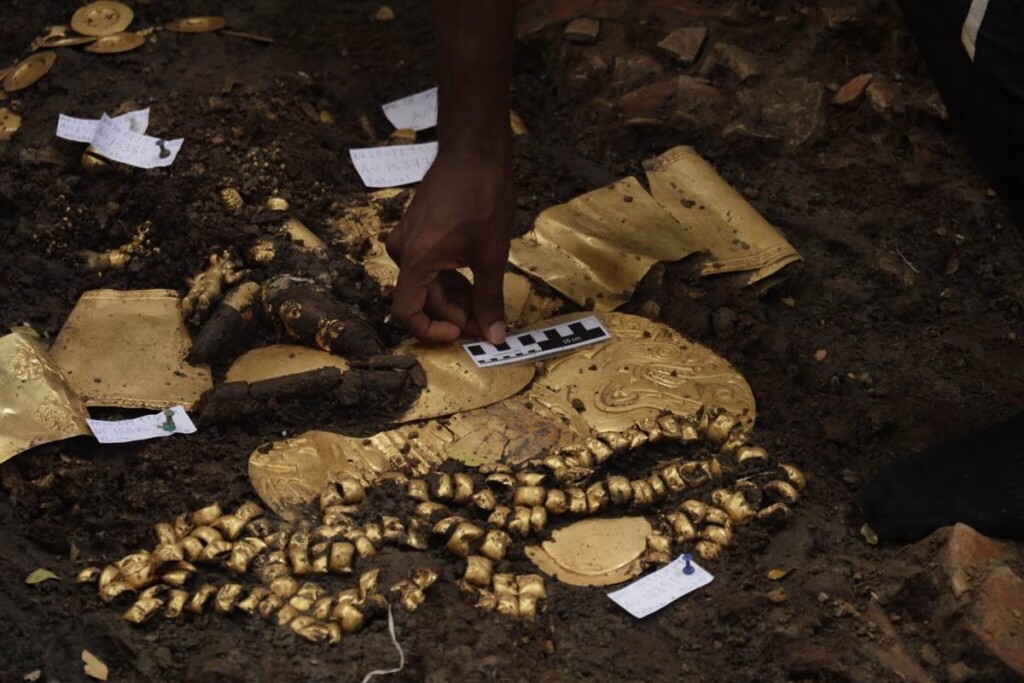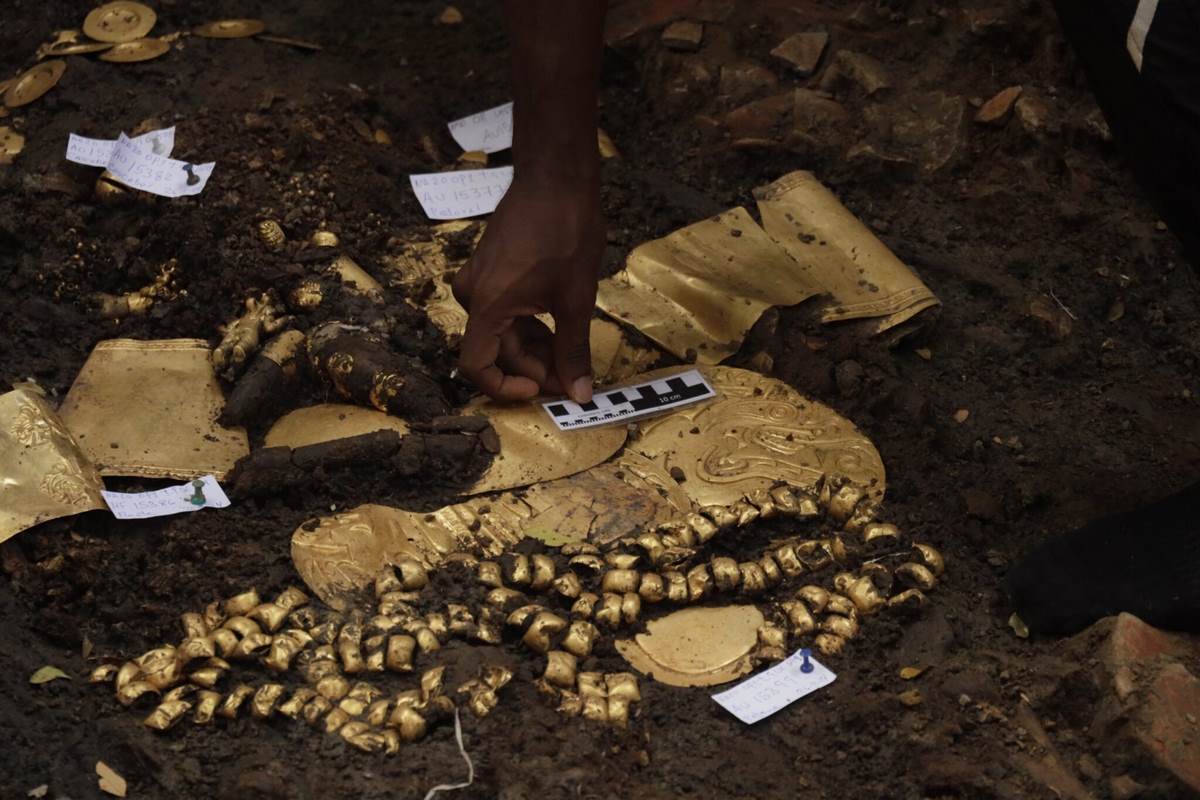
An array of golden artifacts and human remains have been discovered in Panama belonging to a religious leader of a non-Mayan, pre-Colombian society.
Little is known about the nature of the society, but the discoveries, found in the ninth excavated tomb at an archaeological site called El Caño, present some intriguing clues.
Dating to 750 to 800 CE, the individual for whom the tomb was built was probably a 40-year-old man, and has been nicknamed The Lord of Flutes based on the presence of several animal bone flutes found in the tomb.
Buried face-down atop a woman, a practice seldom seen in the region, archaeologists determined he was a religious leader as he was “buried with flutes and bells and not, as in the case of other lords found at the same site, with axes, spears, and objects made with teeth of large predators.”
“This calls attention to the importance of religion in this society,” Dr. Julia Mayo, the excavation’s leader and the director of the El Caño Foundation, told CNN in an email. “After the death of these people, (it was believed that) a constant communication was established between the ancestor and his descendants.”
Bedecked in gold, the Lord of Flutes was clearly a leader who sat at the top of the social hierarchy, but the nature of the artifacts reveals that he may have maintained long-distance connections with other chieftains.
MORE PRE-COLOMBIAN ARCHAEOLOGY: Pre-Incan ‘Floor of Thunder’ Found Where Ritual Dances Atop Stone Platform Made Booming Footsteps Like Thunder
The treasure included 5 golden pectoral ornaments, 2 belts made entirely of golden beads, 4 bracelets, 8 earrings—2 in the shape of human figures (a man and a woman), 1 in the shape of a double crocodile, and 5 made of gold-plated sperm whale teeth—1 necklace of small circular beads, a set of circular gold plates, and 2 bells.
Many of the objects resemble golden pieces found in the Quimbaya region of Colombia, researchers said, suggesting that trade may have linked the two regions.
The site of El Caño was a religious center and necropolis, a Greek word for City of the Dead. Ghastly as it is to us today, the tombs excavated so far have shown that when the important people in the cemetery died, human sacrifices often accompanied them to the grave.
MORE STORIES LIKE THIS: Circular Stone Plaza Moves Up Start of Stone Age Construction in the Andes on Par with Stonehenge
Some of the higher-ranking graves have turned up between 8 and 32 bodies. It’s considered obvious that the woman buried with the Lord of Flutes had some social relationship to him, though nothing indicates marriage necessarily.
Bodies buried face down is common practice, said Mayo’s colleague Nicole Smith-Guzmán, but face down atop someone else has not been seen at El Caño before—rather only at another archaeological site called Sitio Sierra.
When gold-filled graves are found in Latin America, the knee-jerk reaction is to imagine one of the three great empires of Maya, Mexica, or Inca, but the discoveries show that throughout the history of civilization, the Western Hemisphere boasted dozens of complex and rich societies, ancient Panama included.
SHARE This Amazing Discovery With Your Friends Going To Panama…




















